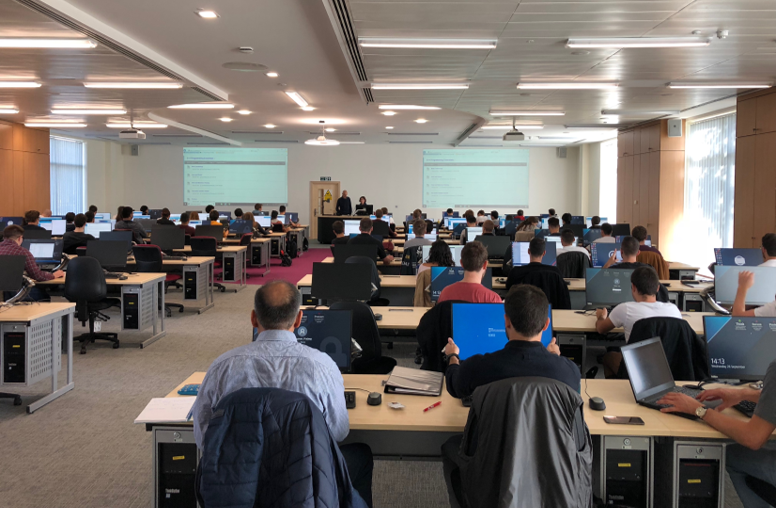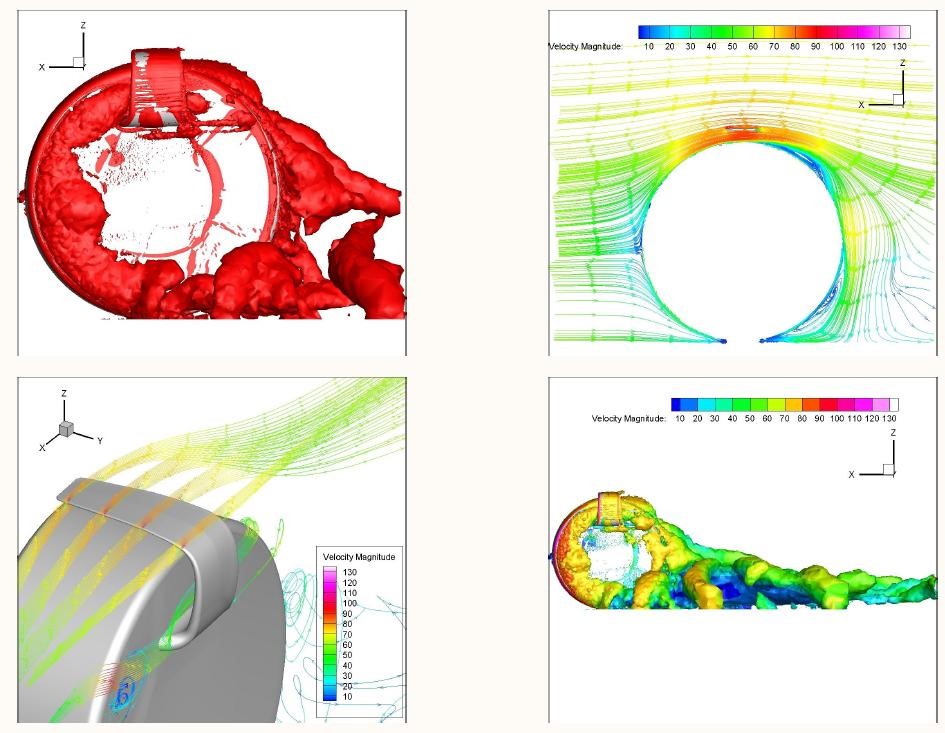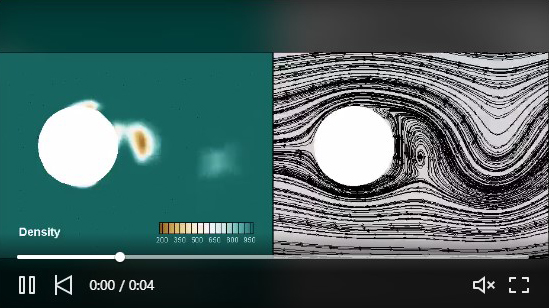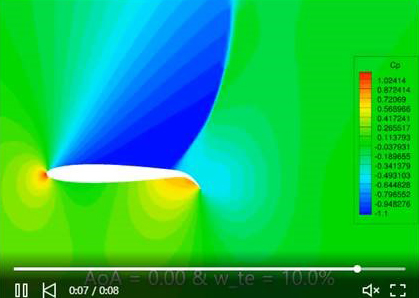Group Project Experience for Computational Fluid Dynamics MSc students
04/06/2020

Our CFD MSc students have successfully presented and submitted their Group Projects. When the students started their GP’s in February, no-one anticipated the exceptional circumstances involving COVID-19. During the past few weeks several students had moved back to their countries, they faced unprecedented circumstances including lockdown, but they were all very determined. Cranfield University provided every possible facility to the students returning to their homes, and to the students who stayed on campus, so that they could successfully complete.
Our Group Project creates a virtual consultancy environment by bringing together students from various backgrounds to solve an industrial problem. Each group of students work together on a different thematic project, related to a fluid problem encounter in industry. There are three themes: aerospace, automotive and energy.
Presentations were held online, students globally from Mexico to Croatia joined and each group presented their work to the examiners on time and to exceptional quality. Here are a couple of examples of the brilliant efforts put in by our students – well done to the CFD MSc class of 2019/2020!

Design and CFD Analysis of Camber Morphing Airfoils in Transonic Regime, Jesus Miguel Sanchez Gil
It has been a stimulating journey where I could learn more in depth about Compressible Simulators and apply it to this concept of the morphing airfoil. These results for optimal design would not have been possible without the collaboration of my team colleagues who have demonstrated great motivation and enthusiasm throughout the course of the project. We aim to publish this project in a scientific article.”
Study of Cavitating Flow Behind a Bluff Body, Jason Ong
I am delighted to showcase some of the research that myself and my colleagues have been working on over the past few months. This animation shows the alternating jet formation that causes cavitating vortex streets as documented by Arpad Fay in 1967.
The animation on the left side depicts the density field that characterises the bubble formation since the void fraction is a function of the liquid density, while the one of the right shows the streamline visualisation of the vortex structures generated. The re-entrant jet causes cavity breakoff on a periodic basis as it slides under cavity zones in a direction that is opposite to that of the localised flow field.

Find out more about Computational Fluid Dynamics MSc course
Categories & Tags:
Leave a comment on this post:
You might also like…
Preparing for assignments and exams?
Sorry! We know it seems a bit mean to mention the exams in January rather than looking forward to the break before it! However, we know many of you will be thinking about your forthcoming ...
Screening for FTSE 100 companies on Bloomberg
So you’re researching an index and need some data on its constituent companies? Bloomberg’s Equity Screening tool makes light work of this, not just for the FTSE, but for indices, exchanges and sectors worldwide. Type EQS ...
Accelerating my future: How Cranfield put me on the fast track to automotive safety innovation
Hello! I’m Michaela Kaiser, and I’m thrilled to share my journey studying abroad. I’m from Calgary, Canada, and I recently graduated from Cranfield’s MSc Automotive Engineering course. My path to Cranfield ...
From Myanmar to Cranfield: My path to Renewable Energy
As someone who is passionate about sustainability, my career goal is to build a path in the renewable energy sector. My aspirations comes from the benefits of developing sustainable energy sources and ensuring energy ...
From lifelong dream to circular economy leader: Q&A with Himesha Randeni on the Environmental Management for Business MSc
What does it take to turn a lifelong passion for the planet into a fulfilling and impactful career? For Himesha Randeni, the answer was the Environmental Management for Business MSc at ...
Library services over the Christmas period
Kings Norton Library will be open 24/7 throughout the holiday period as a study space. Library staff will work until 6pm on Friday 19 December and will resume their normal working hours from 9am on ...







